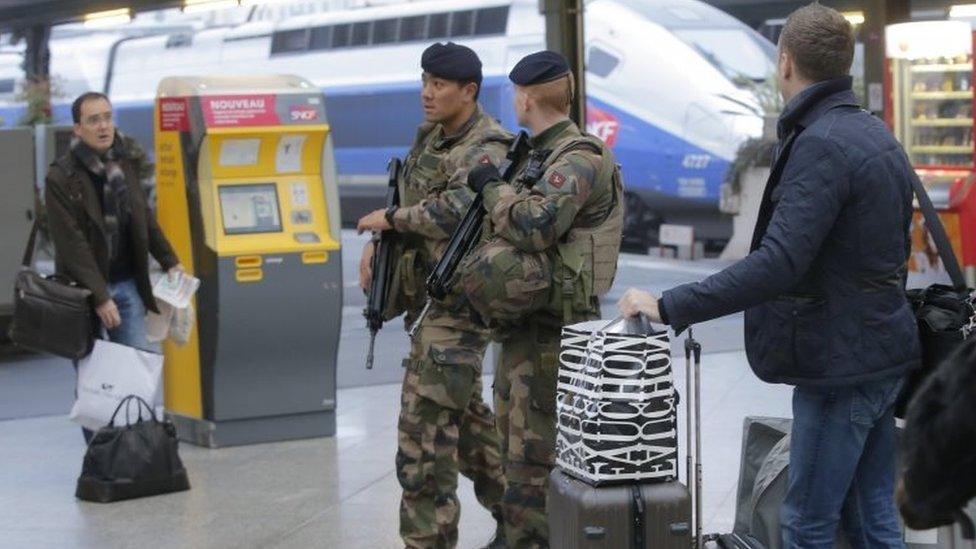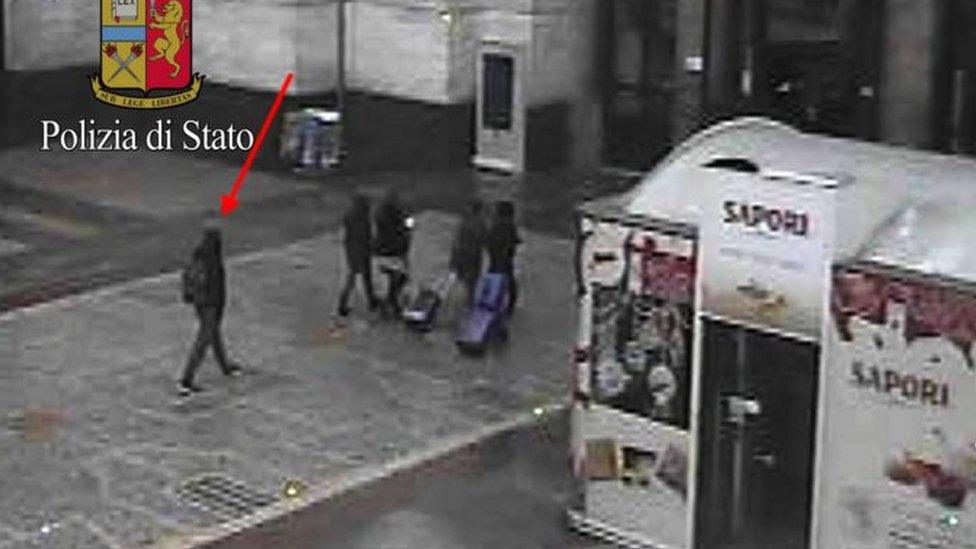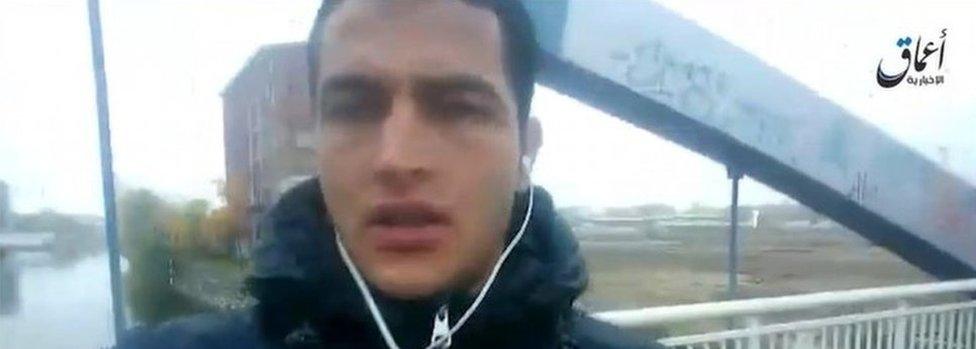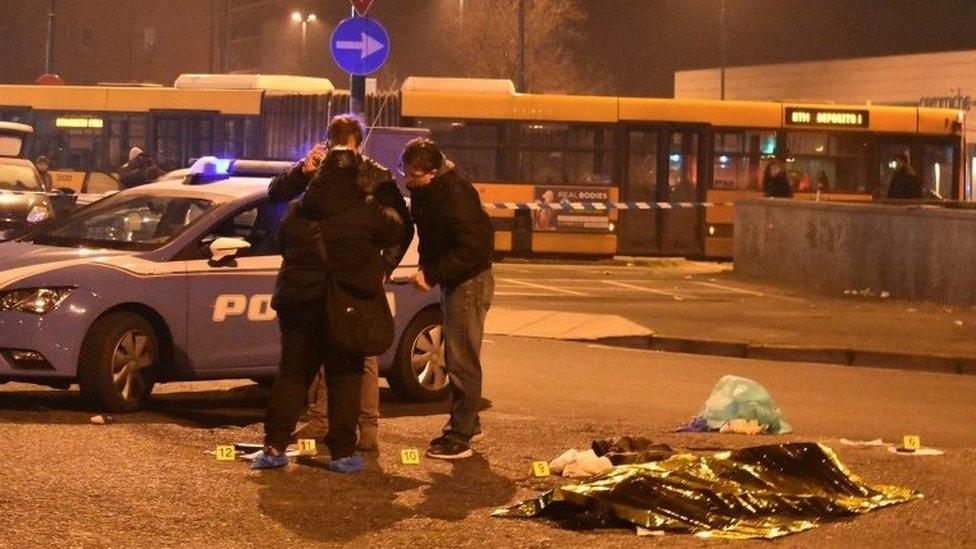Berlin market attack: How did Anis Amri escape?
- Published
Anis Amri, the jihadist who rammed a lorry into a crowd at a Berlin market on 19 December, died days later in an exchange of fire with Italian police in Milan.
The fact that Europe's most-wanted man was able to evade capture for three days, crossing several borders to get from Germany to Italy, has raised questions about security.


Stage one of the escape - the Netherlands?
The missing piece in the puzzle hangs over where Amri headed immediately after the attack.
Dutch police are investigating whether the Netherlands was Amri's first stop, before he went on to Paris and then Italy.

Security has been raised at major European transit points
Their suspicions are centred around a Sim card found in Amri's backpack issued between 20 and 22 December in one of three possible Dutch cities - Breda, Zwolle and Nijmegen, Italian media reported.
Police believe he was spotted on CCTV in Nijmegen station and was probably handed the Sim card there.
In the aftermath of the attack German police searched a refugee centre in Emmerich, just across the border at Nijmegen.
Stage two - France
Train tickets found on Amri after he died show he travelled through France.
The first was for a journey from the city of Lyon to Chambery, in the French Alps, on Thursday afternoon.
CCTV footage has been released of him at Lyon-Part-Dieu station, before he apparently boarded a train to leave the city.
Stage three - Italy
Another train ticket, for later that day, was from Chambery for Milan, with some reports that he stopped in Turin on the way.

Italian police have produced a photo showing Amri leaving Milan central station at 00:58 on 23 December
Police have produced a picture of Amri at Milan central station, three hours before was shot dead.
The fugitive is said to have arrived at in Milan at 01:00 on 23 December. From the main station, he made his way to the suburb of Sesto San Giovanni.
Stage four - Possible escape route
Investigators are trying to find out if the gunman was in contact with anyone in Italy, and what his next destination was should he have evaded capture.

Amri pledged allegiance in a video to so-called Islamic State
He had around €150 (£128) in cash, according to reports, and no food or extra clothing in his backpack. One theory is that he was aiming to take a bus to the Balkans or southern Italy.
But by the time he arrived in Milan, it was clear the authorities had lost his trail.
It was only a routine police stop that led to his death: he drew a gun, wounding an officer before being shot dead by another.

A routine police check led to Amri's death and the end of the manhunt
Security questions
While inquiries continue, foremost on many people's minds is the question of apparent security failures.
Germany issued a European arrest warrant for Amri on 21 December. Pictures of the suspect, along with his various aliases, were widely publicised.
France - which boosted security following attacks in 2015 - further reinforced checks at key transport hubs.
Opposition politicians including centre-right presidential candidate Francois Fillon and Marine Le Pen, leader of the far-right Eurosceptic National Front, were quick to criticise what they said was the failure of the authorities to stop Amri from entering the country.